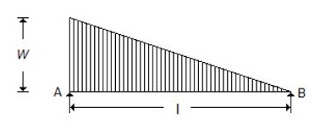Hooke's law holds good up to
A. Yield point
B. Limit of proportionality
C. Breaking point
D. Elastic limit
Answer: Option B
Solution (By Examveda Team)
Hooke's law is a fundamental principle in mechanics that states that the strain in a material is directly proportional to the applied stress, provided the material's elastic limit is not exceeded.Limit of Proportionality: This is the point up to which Hooke's law is valid. Beyond this limit, the material will not follow the linear relationship between stress and strain, as it starts to experience non-linear deformation.
Yield Point: This is the point where the material begins to deform plastically. While Hooke's law is valid up to this point, it is specifically associated with the limit of proportionality, which is slightly before the yield point.
Breaking Point: This is the point at which the material fails and breaks. Hooke's law does not apply here as the material has surpassed its elastic limit.
Elastic Limit: This is the maximum extent to which a material can be stretched or compressed and still return to its original shape. Hooke's law is valid up to the elastic limit, but the term "limit of proportionality" is more precise for this specific context.
Join The Discussion
Comments (1)
Related Questions on Strength of Materials in ME
A. Equal to
B. Less than
C. Greater than
D. None of these
A. $$\frac{{{\text{w}}l}}{6}$$
B. $$\frac{{{\text{w}}l}}{3}$$
C. $${\text{w}}l$$
D. $$\frac{{2{\text{w}}l}}{3}$$
The columns whose slenderness ratio is less than 80, are known as
A. Short columns
B. Long columns
C. Weak columns
D. Medium columns


Hooke's law holds good up to
A. Yield point
B. Limit of proportionality
C. Breaking point
D. Elastic limit
Answer: Option B
I know this statement are corrected but option D too be correct. please share it's corrective feedback.... thanks!